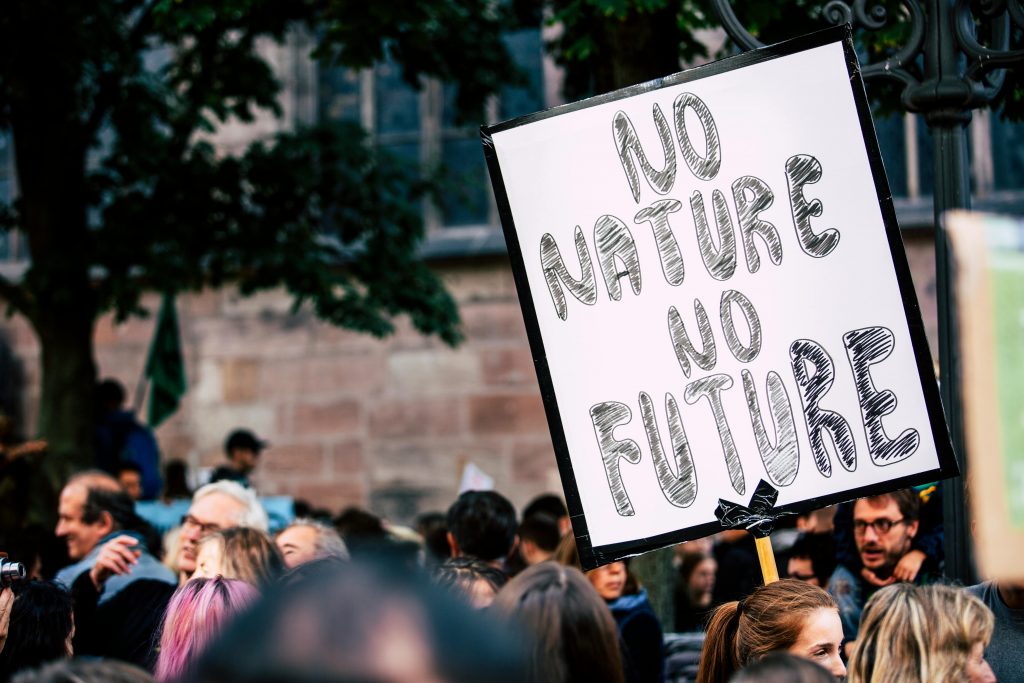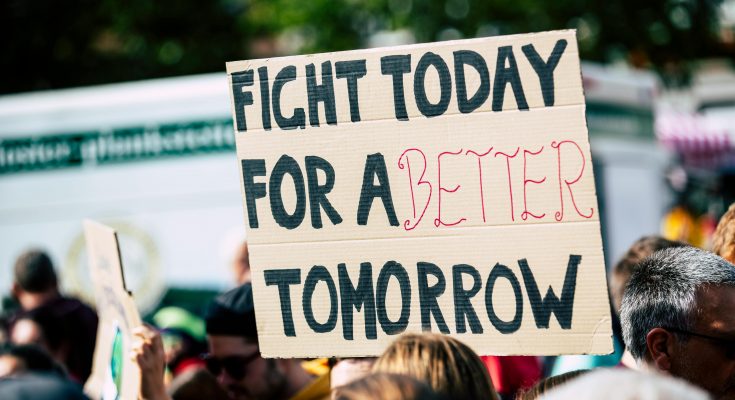Two essays on our site bring fresh perspectives to the pressing issue of global warming and climate change. The first, ‘Global Warming and Climate Change- Pioneering Solutions for a Sustainable Future,’ focuses on innovative technologies and global initiatives tackling environmental challenges. The second, ‘Global Warming and Climate Change- Cultural Shifts and Educational Initiatives for a Greener Future,’ examines the roles of cultural practices, education, and individual behaviour in addressing climate change.
Each essay offers a unique perspective, encouraging a deeper understanding and proactive engagement with one of the most pressing matters of our time.
Table of Contents
Global Warming Climate Change Essay 1 -1500 words
Global Warming and Climate Change- Pioneering Solutions for a Sustainable Future
Introduction
Global warming and climate change represent two of the most pressing challenges facing our planet today. At its core, global warming refers to the long-term increase in Earth’s average surface temperature, primarily due to human activities, notably the burning of fossil fuels. This phenomenon, in turn, drives broader changes in our climate – alterations in weather patterns, sea levels, and various other aspects of the Earth’s system. The urgency of these issues cannot be overstated, as their impact transcends geographical boundaries, affecting ecosystems, human health, and economies globally.
In this essay, we embark on a journey to explore groundbreaking and future-oriented strategies to address these critical issues. Our focus will be on the role of innovation and global cooperation, as these are key to developing effective and sustainable solutions. We aim to understand not just the scientific basis of global warming and climate change, but also the transformative ways in which we can mitigate their impact.
What are the Causes of Global warming?
Human Activities and Their Impact
- The primary driver of global warming is human activity, particularly the burning of fossil fuels like coal, oil, and gas. This combustion process releases large amounts of carbon dioxide (CO2) and other greenhouse gases into the Earth’s atmosphere. Since the Industrial Revolution, these emissions have increased dramatically, leading to a significant rise in atmospheric concentrations of greenhouse gases.
- Apart from burning fossil fuels, other human activities also contribute to this issue. Deforestation, for example, reduces the number of trees that can absorb CO2, while certain agricultural practices release methane and nitrous oxide, two potent greenhouse gases. Industrial processes and waste management are also significant contributors. These activities upset the natural balance of greenhouse gases in the atmosphere, enhancing the greenhouse effect and warming the planet.
The Science of the Greenhouse Effect
The greenhouse effect is a natural process essential for life on Earth. It occurs when certain gases in Earth’s atmosphere trap heat from the sun. Without this process, our planet would be too cold to support life as we know it. However, human activities have intensified this effect, leading to the current problem of global warming.
Greenhouse gases like carbon dioxide, methane, and nitrous oxide act like a blanket, trapping heat in the atmosphere. This additional trapped heat leads to global warming and triggers various changes in global weather patterns – the essence of climate change. While these gases are naturally occurring, human activities have significantly increased their concentrations, thus enhancing the greenhouse effect and leading to the warming observed in recent decades.
Also Check – Essays on Save Earth- 3 Diverse Approaches to Environmental Preservation
The Present Effects
Documented Changes in Climate
Recent observations by NASA have provided clear and incontrovertible evidence of the changes in our climate. One of the most significant indicators is the rise in global temperatures. Over the past century, the Earth’s average surface temperature has increased, with the last few decades being the warmest since modern record-keeping began. This warming trend is not just limited to the air; ocean temperatures have also been rising, leading to various cascading effects on marine life and weather patterns.
In addition to temperature changes, NASA has observed alterations in weather patterns. There has been an increase in the frequency of extreme weather events. Regions that typically experience moderate rainfall are now facing prolonged periods of drought, while others are experiencing more intense and frequent storms.
Real-World Consequences
Complementing NASA’s scientific observations, National Geographic has documented the real-world impacts of these climatic changes. One of the most visible effects is the melting of ice. The Arctic ice cap is shrinking at an alarming rate, affecting wildlife and contributing to rising sea levels. This rise in sea levels poses a significant threat to coastal communities and low-lying areas, potentially leading to displacement and loss of habitat.
Furthermore, the intensity and frequency of extreme weather events like hurricanes, heatwaves, and heavy rainfall have increased. These events not only cause immediate harm to people and property but also have longer-term economic and ecological impacts.
Innovative Responses to Climate Change
Technological Innovations
In response to these challenges, there have been significant advancements in technology. Renewable energy sources such as solar, wind, and hydroelectric power are being developed and deployed at an unprecedented scale. These technologies offer cleaner alternatives to fossil fuels, reducing greenhouse gas emissions.
Another area of innovation is in carbon capture and storage (CCS) technologies. These systems capture CO2 emissions from sources like power plants and industrial processes and store them underground, preventing their release into the atmosphere. Additionally, climate engineering or geoengineering offers potential, though controversial, methods for artificially altering the climate to reduce global warming.
Policy and Global Agreements
On the policy front, the United Nations has been instrumental in fostering international cooperation to combat climate change. Agreements like the Paris Accord represent a global commitment to reduce emissions and limit temperature rise. These agreements are critical, as they set targets and provide frameworks for countries to develop their own climate strategies.
The Power of Community and Individual Actions
Finally, the role of communities and individuals in fighting climate change is indispensable. Grassroots movements around the world have been successful in advocating for environmental policy changes. Individual actions, such as reducing energy consumption, using public transportation, and supporting sustainable practices, collectively make a significant impact. These community and individual efforts complement larger technological and policy initiatives, forming a comprehensive approach to addressing global warming and climate change.
Also Check – Essay on Air Pollution
Shaping a Sustainable Future- Nature, Technology, and Unity
The Interplay of Nature and Technology
The future of combating climate change lies in the harmonious integration of technology with natural processes. Technological advancements have the potential to enhance the Earth’s ability to heal. For instance, renewable energy technologies like solar and wind power work with natural elements and have minimal impact on the environment. In agriculture, precision farming techniques can optimise water and fertiliser use, reducing waste and environmental impact.
Education and Awareness
The role of education in shaping future generations’ response to climate change is pivotal. By integrating climate science and sustainability into educational curricula, we can foster a more environmentally conscious generation. Awareness campaigns and educational programs can empower individuals with the knowledge to make sustainable choices in their daily lives. This education is not just for children but also for adults, ensuring a society-wide shift towards more sustainable practices.
Global Unity
The fight against climate change requires global unity and cooperation. Climate change is a borderless issue, and its solutions require international collaboration. Sharing technologies, scientific research, and successful policy models can help nations collectively reduce their carbon footprint and adapt to changing climate conditions. Global platforms like the United Nations serve as essential forums for this exchange and collective action.
Also Check – Essay of Soil Pollution
The Role of Artificial Intelligence in Combating Climate Change
AI in Climate Modeling and Prediction
Artificial Intelligence (AI) is revolutionising our understanding of climate patterns. AI algorithms can analyse vast amounts of climate data more quickly and accurately than traditional methods. This capability allows for more precise climate modelling and prediction, aiding in the development of more effective strategies for climate mitigation and adaptation.
Smart Infrastructure
AI plays a crucial role in developing sustainable cities and efficient energy use. Smart city initiatives use AI to optimise energy consumption in buildings, reduce traffic congestion, and manage waste more effectively. AI-driven technologies in smart grids help in balancing energy supply and demand, thus promoting the use of renewable energy sources.
AI in Conservation Efforts
AI is also proving invaluable in conservation efforts. Through techniques like machine learning and satellite imaging, AI is used to monitor wildlife populations, track illegal poaching activities, and assess the health of ecosystems. This technology aids in the restoration of habitats and informs policies for wildlife protection, ensuring a more sustainable coexistence with nature.
As we journey through the complexities of global warming and climate change, it becomes clear that this is not just a scientific or environmental issue, but a challenge that touches every aspect of our lives. It calls for a unified response, blending innovation with respect for nature, education with action, and individual efforts with global cooperation.
The future’s not set in stone; it is shaped by the choices we make today. Every action, no matter how small, contributes to a larger change. By embracing new technologies, educating ourselves and others, and working together across borders, we can forge a path towards a more sustainable and hopeful future.
We all have a role to play in this global effort. It’s not just about saving the planet; it’s about preserving the world for generations to come. Our actions today will echo in the lives of our children and their children, a testament to the legacy we choose to leave behind.
Also Check – AI for Climate Action: Technology Mechanism supports transformational climate solutions
Global Warming Climate Change Essay 2 -1000 words
Global Warming and Climate Change – Cultural Shifts and Educational Initiatives for a Greener Future

Introduction
Global warming and climate change are among the most pressing issues of our time, deeply intertwined with human activities and their impact on our planet. Global warming refers to the long-term rise in average global temperatures, which is a significant contributor to broader climate changes affecting our environment. These changes manifest in various ways, from altered weather patterns to rising sea levels, affecting ecosystems and human societies alike.
In this essay, we delve into the less often explored but equally significant cultural, behavioural, and educational dimensions of these phenomena. We will examine how our cultural practices and daily behaviours contribute to these global challenges and explore how through education and awareness, we can steer our societies towards more sustainable futures.
Cultural and Societal Influences on Climate Change
Global Diversity in Environmental Impact
The impact of global warming and climate change is not uniform across the globe, largely due to the diverse nature of cultural and societal practices. Different societies contribute to these phenomena in varying degrees. For instance, industrialised nations with high consumption patterns have a more significant carbon footprint compared to developing countries with lower consumption levels.
Cultural practices also play a role. For example, in some cultures, excessive use of air conditioning and private vehicles contributes substantially to carbon emissions. In contrast, other societies may emphasise community-based lifestyles and use of public transportation, which has a lesser environmental impact. This diversity in environmental impact highlights the need for culturally sensitive approaches to addressing global warming and climate change.
Lifestyle and Consumption Patterns
The connection between everyday behaviours and environmental consequences is a critical aspect of this discussion. Individual choices, such as the type of food we eat, the products we buy, and the modes of transport we use, all contribute to our carbon footprint. In many cultures, consumerism and the pursuit of material wealth have led to increased resource consumption and waste generation, exacerbating the effects of global warming.
However, this also means that positive changes in our daily habits can significantly reduce our environmental impact. Simple actions like reducing meat consumption, opting for sustainable products, and minimising waste can collectively make a significant difference. Understanding and modifying our lifestyle and consumption patterns is, therefore, crucial in our fight against climate change.
Also Check What is the Carbon Footprint in Simple Words? – A Guide for Young Minds
The Role of Education in Addressing Climate Change
Integrating Climate Science in Education
Educating the younger generations about climate change is crucial for fostering a future that is more conscious and responsive to environmental issues. Integrating climate science into educational curricula from an early age can help students understand the causes and effects of global warming, as well as the measures needed to mitigate it. This education is not just about imparting knowledge; it’s about equipping young minds with the tools to think critically about environmental issues and empowering them to take action.
Case Studies- Successful Educational Programs
Around the world, various educational programs have made significant strides in raising awareness about climate change. For instance, in some European countries, schools have incorporated outdoor learning experiences that focus on environmental conservation. In parts of Africa and Asia, community-based educational programs teach sustainable farming and water conservation techniques, crucial in regions heavily impacted by climate change. These examples demonstrate the effectiveness of tailored educational approaches in different cultural and geographical contexts.
Behavioural Change as a Tool Against Climate Change
Psychology of Climate Change
Understanding the psychology behind climate change is vital in comprehending why people act (or don’t act) in environmentally responsible ways. Attitudes, beliefs, and social norms all play a role in shaping our environmental behaviours. For many, the effects of climate change feel distant and abstract, making it challenging to motivate immediate action. By understanding these psychological barriers, we can develop more effective strategies to encourage environmentally friendly behaviours.
Strategies for Behavioral Change
Several initiatives and campaigns have successfully influenced behavioural change for environmental benefit. For example, campaigns promoting the reduction of single-use plastics have led to widespread use of reusable bags and containers. In the energy sector, incentives for using renewable energy sources like solar panels have changed how people power their homes and businesses. Social movements and grassroots campaigns have also played a pivotal role in altering public attitudes and behaviours, showing that widespread change is possible when communities unite for a common cause.
Art and Media in Climate Change Awareness and Action
The Power of Visual Storytelling
Visual storytelling, through mediums like photography and film, has a profound impact on public perception and action regarding climate change. National Geographic, for example, has been instrumental in this regard. Their striking images and documentaries about melting ice caps, endangered species, and extreme weather events bring the realities of climate change into sharp focus. These powerful visuals not only inform but also evoke emotional responses, inspiring people to take action. They transform abstract statistics about climate change into tangible, relatable experiences.
Artistic Expressions
Art, in its many forms, has the unique ability to convey messages and evoke responses that words alone cannot. Paintings, installations, performances, and other artistic expressions can communicate the urgency of climate action in compelling and thought-provoking ways. For instance, public art installations depicting potential future sea levels can be powerful reminders of what is at stake. Art can bridge gaps in understanding and inspire a broad audience to engage with environmental issues more deeply.
Traditional Knowledge and Modern Climate Solutions
Lessons from Indigenous Practices
Traditional ecological knowledge, passed down through generations in indigenous communities, offers invaluable insights into sustainable living and environmental stewardship. For example, indigenous practices in forest management, such as controlled burns to prevent larger wildfires, have gained recognition for their effectiveness and balance with nature. Similarly, traditional water conservation methods used in arid regions demonstrate a deep understanding of natural cycles and resource management.
Integrating Traditional and Modern Approaches
Combining traditional wisdom with modern science presents a promising path in combating climate change. For instance, modern agricultural techniques can be enriched by indigenous practices that promote biodiversity and soil health. Collaborations between scientists and indigenous communities have led to innovative solutions, like integrating traditional crop varieties that are more resilient to climate changes into modern farming practices. Such integrations respect and preserve cultural heritage while advancing effective climate solutions.
In this essay, we’ve seen how culture, education, and behaviour are key in tackling climate change. We’ve learned that every person and community has a part to play. From the stories told through art and media to the lessons from old traditions and modern science, every bit helps in understanding and fighting climate change.
Let’s remember- what we do now shapes the future of our planet. Our small actions add up to big changes. Together, we can create a better world for ourselves and for the generations to come.
Also Check – Essay on Air Pollution in Delhi – Delhi’s Air Crisis- Health Hazards and Hopes for Clear Skies
Also Check – Essay on Air Pollution in India- Current Challenges and Future Strategies
Essay 1 on Save Water – Nature’s Thirst- The Environmental Call to Save Water
Essay 2 on Save Water – Wealth in Water – Economic Insights on Saving Water
Essay 3 on Save Water- The Social Aspect of Water Conservation
Also Check – Essay on Air Pollution in India- Current Challenges and Future Strategies
Also Check – Essay of Soil Pollution
Also Check – Essay on Air Pollution
Also Check – Essays on Save Earth- 3 Diverse Approaches to Environmental Preservation



